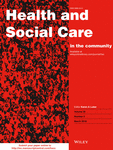Diabetes management in a foreign land: A case study on Chinese Australians
Abstract
The aim of this study was to understand the experience of Chinese migrants living with type 2 diabetes in Australia and explore their culturally specific diabetes management needs, habits and expectations in the Australian context to help shape an Australian Chinese diabetes service. A case study approach was employed across two Australian cities (Melbourne and Sydney), using participant-observations and qualitative interviews. Purposive sampling was used to find diabetes education sessions for observation and facilitators for interviews before snowball technique was used to identify relevant clinicians. Thematic analysis with pattern matching was used for data analysis. A total of 18 participant-observations and 12 interviews were conducted. Chinese migrants appeared to experience multiple barriers in accessing the Australian diabetes care service further complicated by the mismatch between the expectations of Chinese patients and the services available. Chinese patients were observed to be collectivistic-orientated relying on friends for diabetes management. While health professionals appeared to be perceived as a source of reputable health information, they often did not provide ongoing support. When professional support was limited, Chinese patients adopted alternative strategies to address their diabetes, which often involved seeking help and information from peers. Some of this information was non-reputable, potentially resulting in detrimental health outcomes. In conclusion, redesigning diabetes care services in line with the principles of collectivism may more appropriately match the Chinese migrants’ expectations and needs, and better support them in their diabetes journey.




